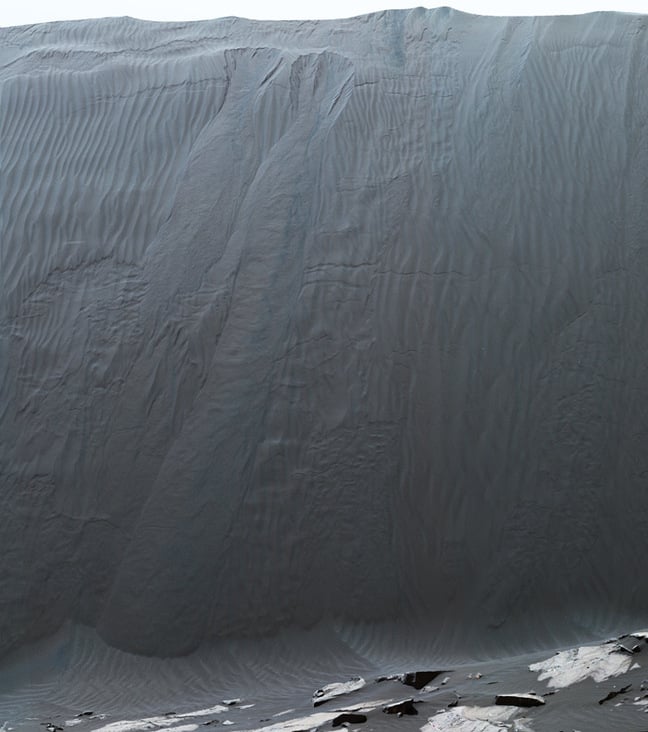This article is more than 1 year old
Curiosity Rover eyes Mars' creeping dunes
Fine panoramic postcard of migrating sand
NASA's Curiosity rover has delivered a fine panoramic postcard of a Martian sand dune, snapped as the trundling explorer ascends the Red Planet's Mount Sharp.

A distant Mount Sharp rises above the Namib Dune. Pic: NASA/JPL-Caltech/MSSS (big version here)
The four-metre-high "Namib Dune" forms part of the Bagnold Dunes, which skirt Mount Sharp's northwestern flank. The mount rises 5.5km from the floor of the Gale crater, some 5° south of Mars' equator.
Of particular interest to NASA boffins is the Namib Dune's "steep, downwind slope, known as the slip face". The space agency elaborates: "Here, sand blowing across the windward side of the dune suddenly becomes sheltered from the wind by the dune itself. The sand falls out of the air and builds up on the slope until it becomes steepened and flows in mini-avalanches down the face."

Sand avalanches on the Namib Dune's downwind face. Pic: NASA/JPL-Caltech/MSSS
Scientists hope Curiosity's dune-watching will offer insights into "how wind moves and sorts grains of sand, in an environment with less gravity and much less atmosphere than well-studied dune fields on Earth". In common with some of their terrestrial counterparts, the Bagnold Dunes creep across the landscape, as much as a metre per Earth year. ®
